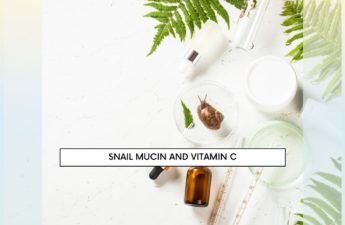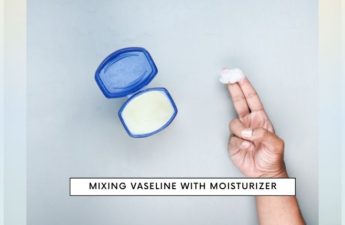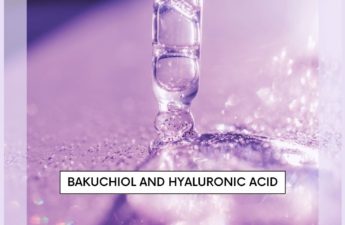Your skin is well-known as the largest organ we humans have. Though it may not be apparent to us, the outer layer of your skin, or skin barrier, is always hard at work protecting the other layers and tissues that lie beneath it and maintaining moisture balance every minute of every day. So what should you do if your skin barrier becomes damaged?
To repair a damaged skin barrier, you can try several techniques. First, try to pinpoint what caused the damage in the first place to negate the issue. Second, try one of our tips in this article, from simplifying your skincare routine to moisturizing to de-stressing, and more.
In this article, we’ll cover the following topics and suggestions so you can gain full knowledge about your skin barrier and how to repair it if it’s damaged.
- Details about what your skin barrier is
- How your skin barrier works
- Nine tips for repairing a damaged skin barrier, including eating well, stopping scrubbing, monitoring skincare ingredients and pH levels, and more
- How to check for signs if your skin barrier healthy and repaired
- Ways to proactively protect your skin barrier to prevent future damage
What Is a Skin Barrier?
It’s important to understand what exactly your skin barrier is before we dive into identifying how to repair one that’s damaged.
Your skin barrier, or technically called the stratum corneum, is a special layer on the outermost surface of your skin, or epidermis.
According to AJ Kanwar, Dermatologist with the Department of Dermatology, School of Medical Sciences and Research, Sharda Hospital and Sharda University Greater Noida in India, “The importance of skin barrier cannot be overemphasized. The skin barrier is important to human life.”
When you think about it, the skin barrier is the outermost layer that’s naturally the first thing you and others see when they look at your face, so it’s important for that reason alone. Also, knowing it’s hard at work every day, protecting the other layers of your skin and the tissues that lie beneath it makes it undoubtedly important.
Dr. Kanwar continues to say, “Physically, the skin barrier protects from external threats such as infectious agents, chemicals, systemic toxicity, and allergens. Internally, the skin helps to maintain homeostasis and protects from enhanced loss of water from the body.”

How Skin Barriers Work
Now that you’re clear on the skin barrier, let’s talk briefly about how it works and does its job.
Physical Makeup of the Skin Barrier Promotes Efficiency
The skin barrier is made in a way we can describe as “brick and mortar” style. Your skin cells act as the “bricks,” and lipids, or oils, are the “mortar.” Those lipids work to move moisture between the cells.
Healthy skin carries a natural moisturizing factor, which helps maintain skin hydration and, in turn, contributes to optimal skin barrier function. This natural moisturizing factor refers to the various amino acids, salts, and pyrrolidone carboxylic acid, otherwise known as PCA, which is a humectant. These all continuously interact and work together to keep your skin supple and moist.
With the support of that strong natural moisturizing factor helping the skin barrier stay strong and healthy, it can work exactly like you might think it does. It’s a physical barrier, the outermost layer, working hard every minute of every day to protect the other layers of your skin.
Variations in the Skin Barrier From Person to Person
Each person’s skin barrier can function differently. Different people’s genetic makeup and individuality means their skin barrier varies. Age naturally changes the skin barrier, as well. Each person’s skin barrier can vary in appearance and at the clinical and molecular levels.

What Happens When the Skin Barrier Is Damaged
Several things can weaken, deteriorate, and irritate the skin barrier, which can damage it. Natural elements, products that come into contact with it, age, and even nutrition and wellness from the inside out can negatively affect the skin barrier. As you can imagine, a damaged skin barrier cannot fully do its job of protecting other layers and displaying that radiant appearance.
Before you jump into any attempt to repair your skin barrier, see if you can track down what may have irritated it in the first place. Did you try a slew of new creams that don’t agree with you? Have you been particularly stressed or eating unhealthily lately? Have you spent too much time outdoors in the sun?
Any of these factors and more can contribute to a damaged skin barrier, and if you can pinpoint the issue and change or eliminate it, you’re off to a great start. Other ideas for how to repair your damaged skin barrier follow in this article, and we’ll get to them shortly.
In general, even if you’re not experiencing signs of a damaged skin barrier, any efforts you make to repair it or build it up will undoubtedly increase the appearance of your skin. Sensitive or not, symptomatic or not, a stronger skin barrier will result in nicer looking skin. Perhaps best of all, a strong skin barrier means it’ll work extra hard to protect the other layers, resulting in overall more resilient skin across all the layers.
The Three Stages of Skin Barrier Repair
Whenever we end up with a wound, the body’s healing process begins immediately — and the same goes for damaged skin, although to a smaller, more subtle degree.
First Stage: Easily Sensitized
Damaged skin is sensitive, whether caused by sunburn, bad products, or a lack of skincare in general. Therefore, during the first stage of skin barrier repair, the damaged area becomes red, painful, itchy, and may even peel.
This happens because the body sends white blood cells to the area, increasing blood flow which causes inflammation. This leads to what we know as skin redness. Additionally, the body may begin to “shed” some of those dead skin cells, leading to itchiness and peeling.
During this stage of skin barrier repair, avoid harsh products including chemical and mechanical exfoliants. They may further damage the skin and restart the healing process.
Second Stage: Repairing
As the skin begins to heal, there may be a continuation of redness and flakiness. Some people also experience dry skin and a rough surface feel.
This happens as damaged skin is “reconstructed” with new tissue. Cells called fibroblasts (these make up the majority of the dermis) rush to the damaged area and begin producing collagen and elastin, as well as other cellular tissue. As new tissue forms, it may appear pink or red.
In addition to the production of collagen and elastin, the body also produces new blood vessels to aid in repairing the skin.
The surface of the skin may feel rough and flaky around this time as new skin forms. In the early stages of skin repair, the skin may be unable to hold onto enough moisture. In cases of severe damage, scar tissue can cause itchiness and dryness as well.
This problem may be exacerbated by dry, cold weather conditions, sun exposure, harsh chemicals, washing with hot water, or washing too often.
Third Stage: Balanced
At this point in the repair process, the collagen converts from type III (early collagen) to type I (protein used to support healthy skin). As the collagen converts, the skin strengthens and may even become tighter. During these final stages of skin barrier repair, most people have smooth, hydrated skin, with a noticeable improvement in the overall appearance.
According to skincare brand Eucerin, eudermic (healthy skin) consists of balanced oil production along the forehead, chin, and nose. The skin should feel soft and smooth, and the skin appears clear and radiant.
However, not all skin is the same. Even with perfectly balanced skin, some people continue to experience sensitivity, redness, itchiness, dryness, and flakiness. As such, it’s important to maintain a regular skincare routine to alleviate these symptoms. If they persist, it’s best to seek out the care of a dermatologist to rule out skin disorders such as eczema, rosacea, psoriasis, or others.
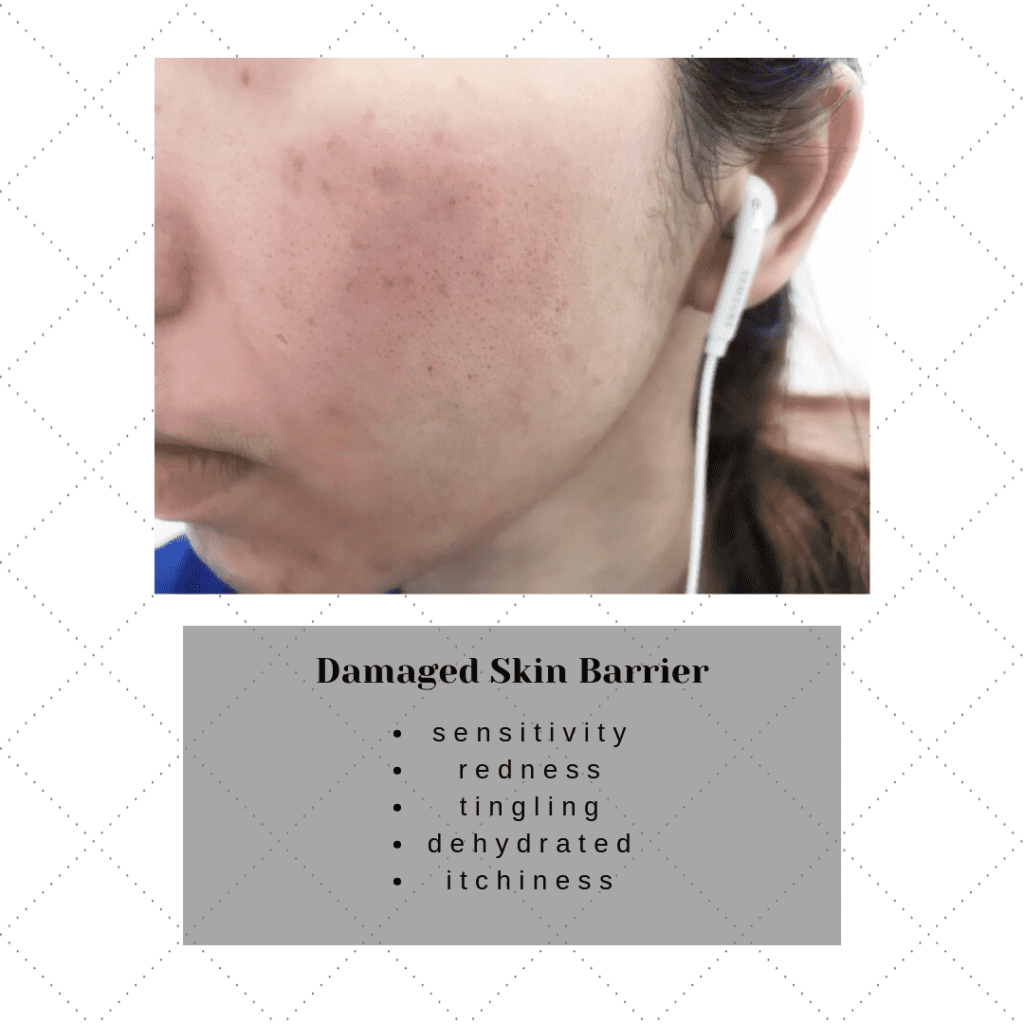
Start By Simplifying Your Skincare Regimen
That’s right. It’s time to go back to the basics: no fancy creams and no magic prescription.
For some people, a damaged skin barrier can be a vicious cycle. Their skin is irritated and showing signs of a damaged skin barrier, so they try a new product. The skin reacts negatively to that, creating more aggravation, stinging, redness, and more. This in itself has damaged the skin barrier more, leaving it more susceptible to further irritants and skin problems.
Overcomplicated skincare routines sometimes are just asking for trouble. Instead, give your skin a break. Take several days off of skin products. Reach for a gentle cleanser to wash away oils, dirt, and makeup of the day, and then let your skin be.
Also, consider simplifying your skin makeup routine by considering removing a product or two. Let your skin breathe, heal, and recoup for a bit.
Dr. Samantha Bunting, a cosmetic dermatologist in Central London, recommends keeping things super simple to give yourself effectively, nurturing skincare. “Take a long, hard look at your beauty practices. Paring your routine right-back is key. Get rid of products with astringents, like alcohol and witch hazel, and avoid foaming cleansers, which leach away our natural moisturizing factor.”
Note: Some people with severe skin irritations, allergic reactions, or eczema are prescribed some sort of steroid cream as a remedy. These thin the skin, which does reduce inflammation, but can leave you vulnerable to other irritants that may negatively impact your skin. Be sure you talk with your doctor or dermatologist before beginning a steroid cream regimen.
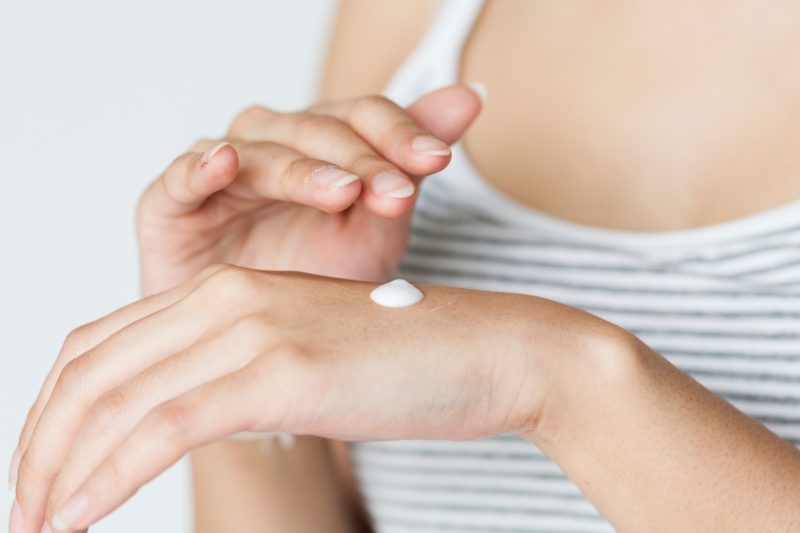
Stop Scrubbing and Exfoliating
Harsh exfoliants and vigorous rubbing is doing your precious skin barrier no favors. Far too many people mindlessly use a brush or skin cleansing cloth that is too rough for their skin type, and they have no idea. When skin problems arise, people rarely correlate their harsh scrubbing with the issues, but they can be connected.
Toss those brushes and instead opt for a super-soft piece of flannel to give your face its lather. If you like a mechanical face scrubbing product, look for one that’s so smooth it’s almost like a skin massage rather than a scrub.
Ensure That You Read Skincare Ingredient Labels
While you know it’s important to know the ingredients in your food choices, it’s also important for skincare choices. You must know what you are or are not putting on your skin.
It’s best for your skin barrier if you avoid harsh ingredients such as parabens, sulfates, formaldehyde, fragrance, and alcohol.
Dr. Bunting is a big fan of the ingredient niacinamide to try in your skincare as you work to repair your skin barrier. Niacinamide is one of two common forms of Vitamin B3, and yes, it’s different from Niacin.
Niacinamide works to boost the body’s natural production of ceramide, improving the skin barrier. According to an article by Jacquelyn Levin, DO, and Saira B. Momin, DO, in the Journal of Clinical and Aesthetic Dermatology titled, “How Much Do We Really Know About Our Favorite Cosmeceutical Ingredients?,” it’s proven that ceramides play a central role in the “structural and functional integrity of the epidermal barrier function.”
You can use a niacinamide product as a pre-treatment for other, more potent products such as retinoids.
According to Drs. Levin and Momin, in the same Journal of Clinical and Aesthetic Dermatology article, niacinamide studies have also shown how significantly it can penetrate the human skin, allowing it to get in and get to work fairly easily.
Their studies went on to show how well niacinamide works to improve epidermal barrier function. It also produces potent antioxidant effects, reduces hyperpigmentation, yellowing of the skin, fine lines, wrinkles, blotchiness, and erythema or redness of the skin due to increased blood flow.
Note: If the topic of skincare ingredients is of particular interest to you, visit the Campaign for Safe Cosmetics’ website for a full list of “Chemicals of Concern” in skincare products.
Related Article: Everything You Need to Know About Toner Masking
Try Skin Oils and Moisturizing Creams
The added moisture in the form of skin oils and moisturizing creams helps nourish the lipid matrix, which is vital in how the skin barrier functions.
According to an article titled, “Skin Barrier Function” featured in the Indian Journal of Medical Research and the National Library of Medicine in 2018, “The lipid matrix in the outermost layer of the skin is crucial for the skin barrier function: cholesterol, free fatty acids, and ceramides are important components of this lipid matrix.”
In a research project about the skin barrier by Dr. Charlotte Beddoes, postdoc researcher at the Division of Drug Delivery Technology at Leiden University, she further defines this lipid matrix referenced above as a matrix consisting of “ceramides, cholesterol, and fatty acids, organized in a crystalline lamellar phase. It is this lipid matrix that has been identified as a major contributor to the skin’s barrier function.”
The addition of externally applied creams and oils adds bonus moisture, ceramides, fatty acids, and lipids to this ever-so-important matrix. More moisture strengthens the layer and contributes to a strong, healthy skin barrier that functions at a top-notch level.
Note: Your skin does have its own natural lipids, but it can be beneficial to add some in the form of carefully selected cosmetic oils and moisturizers. Moisturizing skin cream and oils can ultimately alter the thickness of that stratum corneum layer, as it adds to the lipid content and builds up that “brick and mortar” structure.

What Kind of Moisturizer Is Recommended?
Dr. Bunting is an advocate for a moisturizer touting linoleic acid, an omega-six fatty acid. She says, “It’s an essential fatty acid that we can’t manufacture ourselves, so we must obtain it through diet or topical application. It helps repair barrier function and is an effective moisturizing agent. Oils, such as safflower and sunflower oil, contain linoleic acid, so can be helpful.”
In the American Journal of Clinical Dermatology article, “Natural Oils for Skin Barrier Repair: Ancient Compounds Now Backed by Modern Science,” they agree that oils higher in linoleic acid have the best skin barrier repair potential.
They go on to suggest avoiding oils with oleic acid. They point out that oils with higher amounts of skin-irritating oleic acid might have detrimental effects on the skin barrier’s function, which is the last thing anyone wants to do when trying to moisturize their skin.
While there’s no guarantee that linoleic acid moisturizers are the best choice for everyone, it’s a great place to start based on sound medical research such as Dr. Bunting’s. You must identify the right product for your skin.
A trained cosmetic dermatologist may offer observations and tests to suggest the right brand and ingredients, whether that’s hyaluronic acid, ceramides, linoleic acid, or something else. It’s a matter of trial and error. Each person must find out what works best as the most suitable moisturizer for them as an individual.
Note: According to Dr. Kanwar, in the very worst-case scenarios, an attempt to treat a damaged skin barrier with a moisturizing cream that doesn’t agree with the individual’s skin type could increase their risk for asthma or eczema. Try creams in small amounts and for short periods of time to see how your skin accommodates them.
If you want to know what I use for my skin, you can click here to check out my favorite skin care products.
Pay Attention to pH Levels
A healthy skin barrier that can protect all skin layers needs to maintain its natural, healthy pH.
To that end, strong soapy cleaning detergents are too harsh for that precious skin barrier. These cleansing agents are often disguised on your skincare product’s ingredient list as sodium lauryl sulfate or SLS.
What they do is strip your skin of its natural oils and promote an alkalizing effect. This throws off pH balance, disrupts skin’s natural processes, and leaves the skin barrier dry. It is exposed to the elements and super susceptible to irritants. Alkaline pH levels can be associated with, or even cause, conditions like eczema, irritant contact dermatitis, or acne.
When your skin is allowed to maintain its healthy, optimal pH level, the barrier functions best. It also experiences enhanced moisture retention and less negative effects like scaling. A slightly acidic pH level on the skin helps normal, healthy bacterial flora stay happy on its outer surface.
Look for a face wash or soap that is pH balanced, ideally somewhere in the range of five to six.
Note: If your skincare product doesn’t advertise its pH level, no worries. You can easily check the level using pH testing strips, like these Hicarer Universal pH Test Paper Strips for under $10 on Amazon.
Protect Your Skin Barrier from Harmful UV Rays
If your skin barrier is going to be able to do its job of protecting the skin layers underneath, you better take good care of it. It’s one thing to build up and repair the barrier, but another to proactively protect it.
Use protective skin products and get into healthy routines that take great care of your facial skin and prevent further damage.
If you do one thing, wear sunscreen of at least an SPF or skin protection factor of 30 or more daily. UV rays are one of the toughest environmental stressors to your skin barrier, so keep them out.
In addition to a great SPF and broad-spectrum protection, many sunscreens have additional antioxidants in them. Reach for one that does, so you’re doing your skin a double favor of protecting against the sun’s damaging rays and other tough environmental stressors.
According to Dr. Howard Murad, a board-certified dermatologist and founder of Murad Skincare, if you happen to be a person with lighter coloring and complexion, you tend to have a naturally thinner and weaker skin barrier. Therefore, it’s even more important to protect it.
When applying sunscreen, the American Academy of Dermatology Association suggests a few tips, including these:
- Do a thorough job, so you ensure adequate, even coverage.
- Don’t forget about your lips, and certainly don’t stop at just your face! Hit all areas of your body that the sun will touch.
- Wait a bit before stepping outside into the sun after applying sunscreen. It usually takes about 15 minutes for your skin to fully absorb the sunscreen and let it take effect to protect.
- Don’t forget to reapply regularly, as the protective effects of sunscreen don’t last forever.
Note: If you’re experiencing a very damaged skin barrier evidenced by extremely irritated skin, sometimes, certain sunscreens can aggravate the skin further. In this case, you can refrain from applying daily sunscreen for a while until other methods for repair kick in. When your skin starts feeling some restored moisture and vibrance, consider a sensitive sunscreen formula.
Pamper and Protect Yourself
That’s right. If you want glowing skin with a radiantly healthy skin barrier, you have to take care of your whole self. As we mentioned above, there’s much more to healthy skin than just what products you put on it.
You can think of your skin barrier similarly to how you do the immune system. You must feed its strength from all angles, both mentally and physically.
Make time for a relaxing meditation session or bath. Keep your stress levels to a minimum. With a focus on all things you need for adequate self-care, your skin barrier will react positively.
“Your skin is your biggest organ and needs to be looked after from the inside and out,” says Sarah Brown, founder of sensitive skin range Pai Skincare.
“Make sure you’re using the right products that protect and repair your skin barrier, but also look at your diet and stress levels. Stress is proven to slow down the skin healing process, including skin barrier recovery. So, daily stress or poor stress management can leave the skin barrier in a permanently weakened state.”
Eat Up
Eat healthy, nourishing foods, and your body thanks you. When it comes to a healthy skin barrier, trust us, your healthy diet will deliver for you in the form of perked up, glowing skin.
Building up your skin barrier is not only all about what you put on your skin. It also has to do with what you put in your body to fuel its efforts.
Even though there are many naturally occurring nutrients we know and love for healthy skin found in everyday foods, we can’t absorb sufficient quantities from these to be effective in rejuvenating the skin. For example, ceramides are found in wheat or rice, but not enough of them to make a difference in our skin barrier.
That being said, you can consider taking supplements to your diet to ensure your skin gets some love.
Howard Murad explains, “The healthier you are generally, the better your skin will be. Eat omega-rich foods such as cold-water fish, flaxseed, and walnuts. When you eat well, those omegas eventually go to the surface of the skin. It’s about making every cell in the body as healthy as possible.”
Furthermore, he explains that in addition to consuming healthy lipids to feed that skin barrier, we need good antioxidants and anti-inflammatories. Foods like pomegranate, ginger, green tea extract, and other colorful vegetables and fruit will help you accomplish this.
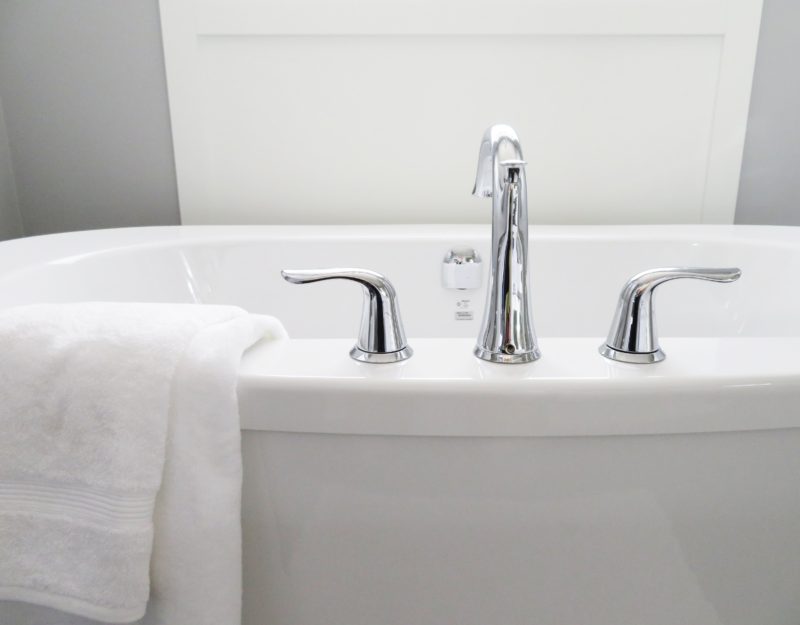
Play It Cool
We mean literally cool. A steaming hot shower or sink water can strip your skin. When washing your face in the bathroom, use tepid water to lather and rinse.
In the shower, don’t place your face directly under the steaming hot water. Instead, splash water from the mainstream as you’re washing your face.
In the figurative sense, also play it cool by leaving your skin alone and avoiding touching or scratching it. Itching damages the skin barrier, so try to avoid it at all costs.
Related Article: How To Prevent Your Skin Dry Out From Hot Shower

Check for Signs of a Healthy Skin Barrier
Ahhhh, fresh, rejuvenated, healthy skin shines with a healthy barrier. After you’ve found an avenue that works for your skin to repair the skin barrier, check that it ticks the boxes that a healthy skin barrier should.
Here’s what a healthy skin barrier might look and feel like:
- Supple
- Moist
- Plump
- Smooth
- Bouncy
- Firm
- Soft to the touch
- Even textured
- Even toned
Dr. Bunting explains a healthy skin barrier like this: “If your skin barrier is working well, it will retain water effectively, maintain a good hydration balance, and be resilient yet flexible. It’s likely to look more radiant as a consequence.”
If your skin barrier is still damaged, your skin may look and feel:
- Tight
- Dry
- Inflamed
- Full of blemishes or breakouts
- Red
- Itchy
- Scaly
- Blotchy in color
- Patchy in texture
Essentially, if your skin is being sensitive in any way, a damaged skin barrier is likely the culprit. A skin barrier that’s still weak, damaged, or thin can more easily allow irritants into the deeper layers of your skin, causing irritation symptoms to occur more frequently. A strong, built-up surface layer is a great way to reduce sensitive skin problems for the long haul.
If you find yourself in that situation, take another look at our tips above, and keep taking great care of yourself and your skin. Check back in another week or so with your skin to see how it’s coming along.
Proactively Protect Your Skin Barrier and Prevent Future Damage
Good for you for taking steps to repair and build up your skin barrier.
Beyond this concept of repairing and strengthening, it’s a good idea to look to the future. What can you do to prevent future stressors from getting at your skin barrier? How can you prevent or minimize any incoming irritants? What about protecting your skin against free radical damage so your strong skin barrier can remain?
As some of the tips for repair above mention, in addition to repairing damage, make sure your mindset is also thinking proactively to protect your skin barrier from future damage so it can protect you. Applying sunscreen regularly and avoiding harsh skincare ingredients are two great places to start.
Conclusion
At the end of the day, you know yourself and your skin best. Minding the advice above, do what feels great for your skin. A skin barrier that feels healthy, strong, and well, likely is. When you notice signs of a damaged skin barrier, don’t hesitate to refer to the above techniques and carefully, expeditiously, get to work repairing it.
Sources
- Kiehl’s: What is the Skin Barrier?
- Get the Gloss: 10 Ways to Build Up Your Skin Barrier
- Practical Dermatology: Understanding the Role of Natural Moisturizing Factor in Skin Hydration
- Skin Library: How to Repair a Damaged Skin Barrier
- Healthline: Skin Barrier Function and How to Repair and Care for It




